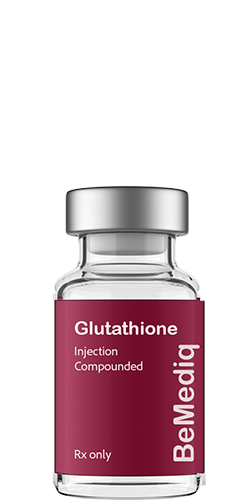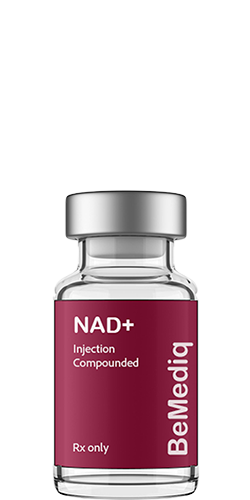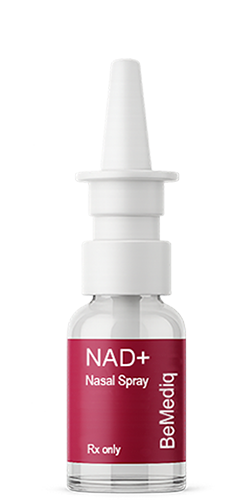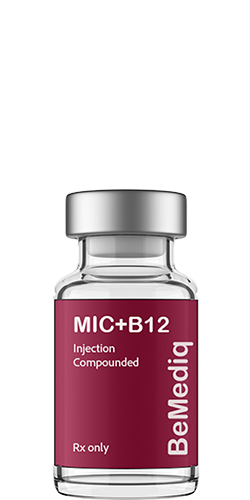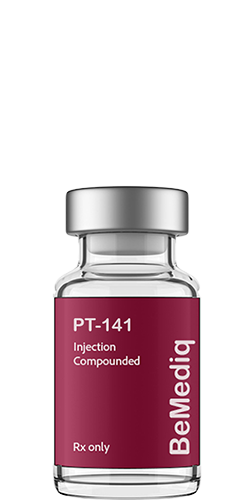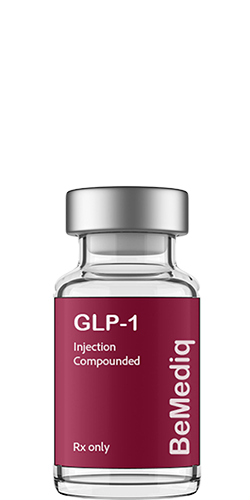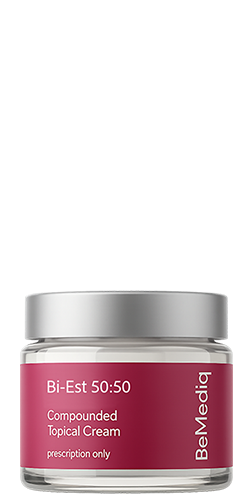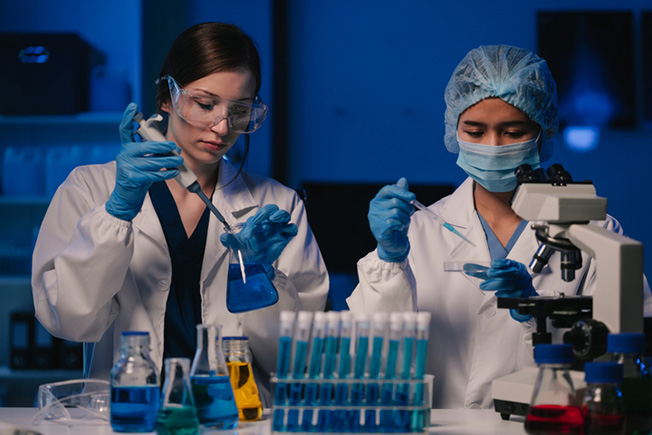Energy. Glow. Clarity. It isn't just youth - it is cell biology. Discover what changes inside your cells after 35 - and how to support them.

Editor’s Note: What I Wish I Knew Sooner About NAD+, and Why It Matters After 35
As women, we often carry the invisible weight of high expectations - to remain sharp, energized, composed, and radiant, regardless of the phase of life we're in. But what if the changes we feel aren't just emotional or hormonal, but cellular?
This article was written to bridge the gap between science and everyday experience. To help you understand that if you're feeling more tired, foggy, or less radiant than you used to, it's not in your head. It's in your biology. Fortunately, there are ways to support it and potentially reclaim your vitality.
NAD+ isn't just a trend. It's a vital molecule your body has always relied on - and one that might need your attention now more than ever.
Remember this? You used to bounce back from anything.
You could stay up all night, eat whatever you wanted, and still wake up glowing.
You powered through long days, aced exams, and bounced back from anything effortlessly.
That wasn’t just youth. That was NAD+ working silently in your cells. More precisely: it was your body running on high levels of NAD+ - a molecule you’ve probably never heard of, but one your cells depend on every single day.
NAD+: The Cellular Power Molecule
You may not think about it often, but every time your body converts food into energy, your skin repairs itself, or your brain fires on all cylinders, one little molecule is behind it all: NAD+.
NAD+ stands for Nicotinamide Adenine Dinucleotide. Tucked inside every cell, this tiny molecule helps your body turn food into real, usable energy - the kind that powers your brain, fuels your workouts, and keeps your skin looking vibrant.
It’s not fuel like carbs or fats - it’s more like the spark that helps your cellular engine run. Think of it as the ignition key for your cellular engine.
No NAD⁺, no energy. No repair. No vitality.
What NAD+ Does When It’s Working at Full Capacity?
- Powers your mitochondria - so you feel energized and focused¹
- Helps repair DNA - protecting you from daily damage and aging²
- Boosts collagen &skin regeneration - giving you that natural glow³
- Supports brain clarity & neurotransmitters - so your thoughts stay sharp⁴
- Helps to balance hormones via metabolic regulation - for steadier moods & cycles⁵
- May protect hair follicles - helping your strands stay strong and vibrant⁶*
* Emerging studies suggest that NAD⁺ precursors may support hair follicle health by reducing oxidative stress and enhancing mitochondrial function. Further clinical research is underway.
Your Body’s NAD+ “Factories”
Did You Know Your Body Has Its Own NAD+ “Factories”?
You might think of supplements or nutrition when it comes to NAD+, but have you ever wondered where in your body this essential molecule is made?
Take a moment and imagine your body as a living ecosystem. Inside, a handful of key organs are constantly at work behind the scenes - producing, recycling, and managing your NAD+ supply to keep everything running smoothly.
The question is: Are these internal factories still running at full capacity?
Let’s take a look at what happens inside - and why this process matters more than ever as we age.
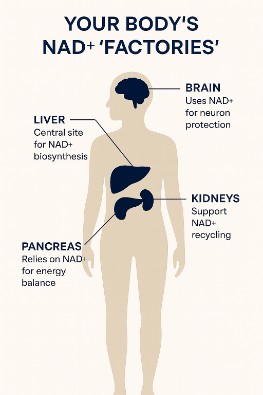
Although every cell in your body can produce a little NAD+, it’s a few vital organs that carry most of the load. Behind the scenes, they work like tiny biochemical factories, tirelessly converting nutrients into this life-sustaining molecule. These organs play a crucial role in NAD+ production, each with its unique contribution.
Your liver is the central hub. It takes in niacin and tryptophan from your food and turns them into NAD+ precursors, making it the body’s primary biosynthesis site. Your kidneys quietly support the process by recycling those precious building blocks, helping maintain a steady supply. The pancreas, on the other hand, relies on NAD+ to help balance blood sugar and sustain energy levels - a delicate job that becomes harder with age. And then there’s your brain: an organ that not only demands a constant flow of energy but also depends on NAD+ to protect its neurons, regulate your inner body clock, and keep you mentally sharp.
Supporting your NAD+ system can make a significant difference. By providing these organs with what they need - through nutrient-dense foods, wise lifestyle choices, and, when appropriate, targeted supplementation - you can help sustain their function, slow cellular aging, and build long-term resilience from within.* This approach offers hope for maintaining your health and vitality as you age.
What Happens In Your Mid-30s?
Around age 35, something begins to shift - your NAD+ levels start to decline, a crucial factor in your cellular health.
At first, the decline is subtle. However, over the years, this gradual decline can have a profound impact.
Studies suggest that in high-energy tissues, such as muscle and skin, NAD+ levels may decrease by up to 50% each decade. That’s significant - and it’s not just a lab finding.7
By your mid-40s, you might be running on just one-third of the NAD+ you had in your twenties.8 And while there’s no app alerting you to “low NAD,” your body has its way of letting you know: Your metabolism feels sluggish. Recovery takes longer. Your skin loses some of its natural elasticity. It’s harder to focus, and that second cup of coffee becomes more of a need than a treat.
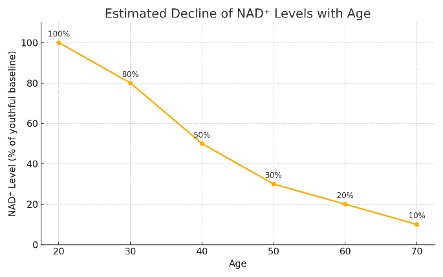
These aren’t just typical signs of aging. Emerging evidence suggests they may reflect a decline in cellular NAD+ levels - which many researchers link to metabolic and regenerative function.*
So why does this matter?
Because NAD+ isn’t just another wellness buzzword, it’s essential for cellular health. NAD+ helps your cells turn food into energy, repair damaged DNA, modulate stress responses, and keep your mitochondria running smoothly.
And as the organs that help build and recycle NAD+ - like the liver, kidneys, pancreas, and brain - begin to age too, your body’s ability to maintain optimal NAD+ levels declines even further.
It’s a slow process, but one with clear consequences.
Understanding how this system works is key. Once you know it, you can take steps to support it, empowering yourself to take control of your health.
It’s not about reversing time - it’s about giving your body the tools it needs to age well, stay energized, and feel more like you again. And at the heart of this is understanding and supporting your NAD+ levels.
Why NAD+ Becomes Even More Important During Perimenopause and Beyond?
Maybe you’ve seen it in someone close to you - your mother, an older sister, a beloved actress. One day, her face looked a little more tired. Her glow has dimmed. And while you can’t see what’s happening inside, you sense something deeper has shifted.
Maybe you’ve felt it in yourself. A subtle, quiet change. Energy that doesn’t carry you the way it used to. Sleep that feels less restorative. Mood shifts that arrive without warning. It’s easy to blame it on stress or aging, but under the surface, your biology is being rewritten. Understanding these changes can empower you to take control of your health and your well-being.
As women transition through perimenopause and menopause, hormones like estrogen, progesterone, and DHEA begin to decline. And with that decline, the demands on your cells start to rise. These hormones don’t just regulate cycles or emotions - they play a critical role in cellular housekeeping.
Estrogen, for example, helps regulate inflammation, supports mitochondrial energy production, and promotes DNA repair. Progesterone, often overlooked, has a calming and protective influence — not only on the brain but also on the oxidative stress that wears down cells over time. When these hormones fade, your cells are left with fewer resources to do the same amount of work.
That’s when the body leans more heavily on another key molecule: NAD+.
NAD+ isn’t just a background player - it’s a central regulator of healthy cell function. Deep within your cells, it fuels essential enzymes like sirtuins and PARPs, which are responsible for maintaining DNA integrity3, supporting mitochondrial energy metabolism9, and modulating how your body responds to stress and inflammation.8
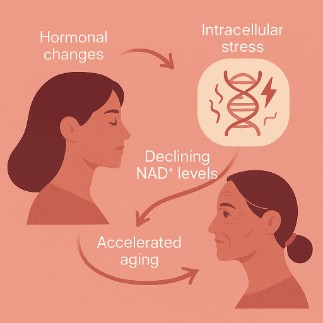
But here’s the rub: just as hormone levels drop, NAD+ production also begins to decline. The timing isn’t coincidental. It’s cumulative.
Even estrogen’s influence on gene expression - whether it’s stimulating collagen, supporting fat metabolism, or protecting the brain - is indirectly NAD+ - dependent. That's because estrogen doesn’t act alone. It’s part of a delicate conversation between your hormones and your cells’ inner repair teams - including sirtuins, which help calm stress and support healthy function.3
And if your liver - one of your body’s primary hormone regulators and NAD+ production hubs - is already overworked by stress, environmental toxins, or a nutrient-poor diet, the situation can compound. Less hormone support. Less NAD+. More cellular stress.
Biologically speaking, it's a perfect storm: Declining hormones, rising cellular stress, and falling NAD+ - a trio that can quietly accelerate aging from within.*
*Based on studies: Imai & Guarente (2014)3, Ying (2008)1, and Lautrup et al. (2019)8
It’s a quiet unraveling, and many women don’t see the connection until the symptoms become hard to ignore.
Remember, these changes are a regular part of the menopausal transition and understanding them can help you manage your health more effectively. *
Can You Boost NAD+ Naturally?
Have you ever wondered if your daily habits could influence how your body ages, right down to the cellular level?
Indeed, you hold the power in your hands. Your body is remarkably responsive to the daily choices you make. The way you eat, move, rest, and recover shapes your ability to build and preserve NAD+ - even as you age.
Taking regular breaks from eating, such as with intermittent fasting, gives your body time to shift into repair mode. That’s when some of its most powerful longevity pathways get activated. In this state, your body ramps up enzymes that help rebuild NAD+ and awaken protective proteins known as sirtuins - molecules that support metabolic balance and DNA repair, essentially acting as the guardians of your cellular health.²
Movement in all its forms is a powerful tool in your quest for cellular health. Whether it’s a brisk morning walk, interval training, or a long bike ride, exercise nudges your cells to become more efficient. These physical challenges stimulate your mitochondria - the powerhouses of your cells - to produce more energy, and in turn, to increase NAD+ levels. Over time, regular movement acts like a natural NAD+ amplifier.10
But just as your choices can help build NAD+, they can also drain it. Regular alcohol consumption, ultra-processed snacks, and too many inflammatory foods may seem harmless in the moment, but they quietly chip away at your NAD+ reserves. Even moderate drinking has been shown to increase oxidative stress and inflammation, forcing your cells to burn through NAD+ more quickly than they can replenish it.11
Of course, food can be your greatest companion. Certain nutrients serve as raw materials your body uses to make NAD+:
- Niacin (vitamin B3), found in mushrooms, peanuts, and nutritional yeast;
- tryptophan, present in oats, pumpkin seeds, and tofu and
- nicotinamide riboside - available in trace amounts in dairy or as a supplement
- all feed into your body’s NAD+ synthesis pathways.12
Still, here’s the challenge: as we age, our internal NAD+ machinery - especially in organs like the liver, kidneys, and pancreas - tends to slow down.9 That means even if you eat well, move regularly, and manage stress, your body might not produce or recycle enough NAD+ to meet increasing demands, especially during periods of hormonal shifts or inflammation.
During demanding times, thoughtful supplementation may offer gentle support specially when paired with rest and nourishment It’s not about replacing good habits - it’s about reinforcing them. Supporting your NAD+ system with clinically guided compounds can help your cells keep pace with life’s demands and give you the metabolic edge to feel your best, not just today, but for years to come.*
Can NAD+ Help You Stay Energized - Before Depletion Hits?
So, here’s the question: Do you wait until you feel completely depleted? Or is it wiser to step in earlier - proactively, preventively - to support what your body is already trying to do?
For many women, it’s not about patching something up - it’s about gently tuning in before things unravel. It’s more like a seasonal tune-up: a short, intentional phase to nourish the deeper systems that often get neglected, long before full-blown fatigue or burnout arrive.
That’s where clinician-guided NAD+ protocols - such as infusions, nasal sprays, topical creams - may come in.
Not as a cure-all, but as a gentle recalibration - a soft reset for your system. A way to meet your body where it is, especially during midlife, when natural NAD+ production begins to decline.
Emerging research is exploring their potential role in supporting cellular energy, metabolic function, and resilience to stress.13
Each format works a little differently - injections may offer faster availability; oral precursors tend to build gradually - but the goal is the same: To support what time may be gently taking.
Let’s not forget - even the most advanced protocols mean little without the everyday inputs your body depends on. No supplement - not even NAD+ - works in isolation. Any meaningful change begins with what you nourish yourself with daily: whole foods rich in micronutrients, deep rest, movement, and intentional pauses. In some cases, targeted supplementation - such as B12, B6, or folate - may help lay the groundwork for NAD+ to function effectively. These cofactors support the salvage pathway, which helps maintain NAD+ levels and protects sensitive systems, such as the liver and methylation balance.
That’s why NAD+ therapy, when used, is best approached with intention and care:
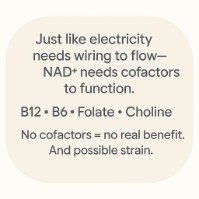
- cyclical, not continuous,
- supported, not standalone - NAD+ needs B12, B6, folate, and choline,
- and aligned with your unique biology, your goals, and your phase of life.
With the proper cofactors - and the smart lifestyle choices - NAD+ support can become part of something much deeper: Not a temporary solution, but a gentle return to balance. A return to your natural energy. Not by overriding your biology, but by gently reminding it how to thrive.
But that brings up the next question - when is the right time to begin?
When Should You Start?
There’s no exact age stamped on the moment your body begins to run low on NAD+. It doesn’t follow your birthday - it follows your biology.
For many, this shift begins quietly in the mid-thirties. But the pace of decline can vary wildly from person to person. If your life has been marked by high stress, irregular sleep, frequent travel, or long-term inflammation, your NAD+ reserves may already be under pressure, no matter your age. Conversely, someone in their fifties who lives with intention, eats well, and protects their sleep might still enjoy relatively youthful NAD+ levels.
So, how do you know when it’s time?
Sometimes the body whispers before it speaks. A little more fatigue than usual. A foggy head that takes longer to clear. Recovery that used to take hours now takes days. Skin that’s a little less elastic, moods that shift more easily, or that lingering sense that your resilience just isn’t what it used to be. These are not just random inconveniences - they can be your cells telling you they need support.
Rather than waiting for things to get worse, some people choose to be proactive. They begin integrating NAD+ -building nutrients into their diet or explore NAD+ support during stressful seasons or times of hormonal change. Others use it more regularly, as part of a long-term strategy to preserve cellular health and energy over time.
There’s no universal rule - only your rhythm. A functional practitioner can help you interpret that rhythm by reviewing your symptoms, lifestyle, and even lab markers that hint at oxidative stress or mitochondrial strain.
The earlier you begin supporting your NAD+ system - in a way that aligns with your body’s real needs - the more likely your cells are to respond with strength, clarity, and lasting vitality.*
Final Thoughts
NAD+ won’t replace sleep, nutrition, or joy. But it might help your cells respond better to all of it.*
You already take care of your skin, your food, your fitness. Maybe now it’s time to take care of your cells.
NAD+ won’t turn back time - but it may help your biology catch up with the life you want to live.
Ready to bring your biology back on your side? Explore clinician-guided NAD+ support for women 35+.
Discover your personalized plan
Key Takeaways
- NAD+ is a vital coenzyme found in every cell, responsible for energy production, DNA repair, collagen synthesis, and hormonal balance.
- Starting around age 35, NAD+ levels naturally decline - by up to 50% per decade in some tissues - contributing to fatigue, dull skin, slower metabolism, and brain fog.
- Hormonal shifts during perimenopause and menopause may further accelerate NAD+ depletion, affecting your ability to recover and regenerate.
- While lifestyle changes (like fasting, exercise, and nutrition) can help, targeted support may become essential with age.
- Clinician-guided NAD+ therapies - such as injections, nasal sprays, and topical creams - can help replenish cellular function, support skin health, and restore energy from within.
- NAD+ is not a cure - but a foundational tool to help your body respond more effectively to the self-care you're already practicing.
* These statements are for informational purposes only and have not been evaluated by the Food and Drug Administration. This content is not intended to diagnose, treat, cure, or prevent any disease. Always consult a licensed healthcare provider before starting any supplement or therapy.
-- End of Article --

Written by Elena B., Women's Wellness Coach
About the Author: Elena B. is an Integrative Health Educator (non-clinical) with a background in holistic health, hormonal resilience, and longevity science. Her mission is to help women reconnect with their biology, understand their cycles, and make empowered lifestyle choices - without medical claims or therapeutic prescriptions.
Written by Elena Brull, FNR, Functional Nutrition Researcher & Women’s Health Journalist
About the Author
Elena Brull, FNR, is a Functional Nutrition Researcher and Women’s Health Journalist specializing in integrative approaches to hormonal balance, nutrition, and longevity. Her work combines evidence-based insights with holistic health principles to help women understand their biology and live in rhythm with it. She writes from a non-clinical, educational perspective — with the intention to inform and empower, not to diagnose or prescribe.
FAQ
What are signs of low NAD+ in women over 35?
Fatigue, dull skin, brain fog, slower recovery - especially during hormonal changes like perimenopause*.
Can NAD+ help during menopause?
Some studies suggest NAD+ may support mitochondrial energy and stress resilience, which decline with hormonal changes.*
When should I consider NAD+ therapy?
If you notice persistent fatigue, mental fog, or poor skin recovery, NAD+ support may be worth exploring.*
*Disclaimer: These statements have not been evaluated by the Food and DrugAdministration. This product is not intended to diagnose, treat, cure, or prevent any disease.
References
1Ying, W. (2008). NAD+ and NAD In cellular functions and cell death. Frontiers in Bioscience, 13, 1339–1367. https://pubmed.ncbi.nlm.nih.gov/16720381
2Fang, E. F. et al. (2016). NAD+ in aging: molecular mechanisms and translational implications. Trends in Molecular Medicine, 22(10), 858–874. https://pubmed.ncbi.nlm.nih.gov/28899755
3Imai, S. & Guarente, L.(2014). NAD+ and sirtuins in aging and disease. Trends in Cell Biology, 24(8),464–471. https://pmc.ncbi.nlm.nih.gov/articles/PMC4112140
4Lautrup, S. et al. (2019). NAD+ in Brain Aging and Neurodegenerative Disorders. Cell Metabolism, 30(4),630–655. https://pmc.ncbi.nlm.nih.gov/articles/PMC6787556
5Yoshino, J. et al. (2011).Nicotinamide mononucleotide, a key NAD+ intermediate, treats the pathophysiology of diet- and age-induced diabetes in mice. Cell Metabolism,14(4), 528–536. https://pmc.ncbi.nlm.nih.gov/articles/PMC3204926
6Kim, H. J., Kim, H. J., Yoon, H. J., & Kim, K. S.(2024). β-Nicotinamide mononucleotide promotes cell proliferation and hair growth by reducing oxidative stress. Biomolecules, 14(3), 268. https://www.ncbi.nlm.nih.gov/pmc/articles/PMC10893548
7Massudi H., Grant R., Braidy N., Guest J., FarnsworthB., Guillemin G.J. (2012). Age-associated changes in oxidative stress and NAD+ metabolism in human tissue. PLOS ONE, 7(7): e42357. https://pmc.ncbi.nlm.nih.gov/articles/PMC3407129
8Lautrup S., Sinclair D.A., Mattson M.P., Fang E.F.(2019). NAD+ in Brain Aging and Neurodegenerative Disorders. CellMetabolism, 30(4), 630–655. https://pmc.ncbi.nlm.nih.gov/articles/PMC6787556
9Verdin, E. (2015). NAD+ in aging, metabolism, and neurodegeneration. Science, 350(6265), 1208–1213. https://pubmed.ncbi.nlm.nih.gov/26785480
10Canto,C., Gerhart‑Hines, Z., Feige, J. N., Lagouge, M., Noriega, L., Milne, J. C.,Elliott, P. J., … Auwerx, J. (2009).AMPK regulates energy expenditure by modulating NAD+ metabolism and SIRT1activity. Nature, 458(7241), 1056–1060. https://pmc.ncbi.nlm.nih.gov/articles/PMC3616311
11Guest, J., Grant, R., Mori, T. A., & Croft, K. D.(2014). Changes in oxidative damage, inflammation and [NAD(H)] with age incerebrospinal fluid. PLoS One, 9(1): https://journals.plos.org/plosone/article?id=10.1371%2Fjournal.pone.0085335
12Bogan,K. L., & Brenner, C. (2008). Nicotinic acid, nicotinamide, and nicotinamideriboside: a molecular evaluation of NAD⁺ precursor vitamins in human nutrition.Annual Review of Nutrition, 28, 115–130. https://pubmed.ncbi.nlm.nih.gov/18429699
13 de Guia, R. M., Agerholm, M., Nielsen, T. S., Consitt, L. A., Kraus, W. E.,Olesen, J., Treebak, J. T., & Wojtaszewski, J. F. P. (2019). Aerobic and resistance exercise training reverses age-dependent decline in NAD⁺ salvage capacity in human skeletal muscle. CellMetabolism, 30(3), 528–542.e5. https://pmc.ncbi.nlm.nih.gov/articles/PMC6577427
Discover Products to Support Your Health & Well-Being
Science Spotlight
Curious About the Science behind this Article?
Coming soon

